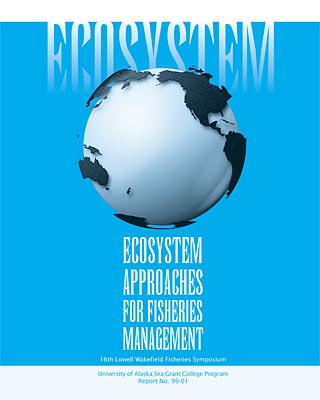
"Back to the Future": A Method Employing Ecosystem Modeling to Maximize the Sustainable Benefits from Fisheries
Tony J. Pitcher, Nigel Haggan, David Preikshot, and Daniel Pauly
- Price: $0.50 Sale: $0.00
 This is part of Ecosystem Approaches for Fisheries Management
This is part of Ecosystem Approaches for Fisheries Management| Format | Price | |
|---|---|---|
| PDF download [186.6 KB] Bypass cart and download |
Free | Add to Cart |
Description
Single-species approaches to fishery assessment are not sufficient to avoid the changes to ecosystems caused by fishing. These changes include the replacement of high-trophic-level, high-value species, by low-trophic-level, low-value species. Commercial fisheries practices and ecosystem effects interact, producing serious depletion that is usually detected too late resulting in fishery collapses and the failure of stocks to rebuild. Multispecies management is required. Whole ecosystem modeling can evaluate the impacts of fishing on nonharvested groups. Ecosystems and their embedded fisheries can now be effectively modeled using the mass balance system of Ecopath, and new routines, Ecosim and Ecospace, which allow simulation of "what if" questions related to changes in time and space by a fishery sector. Beyond the limits of numerical simulation, a new method termed "Back to the Future" draws up ecosystem models of current, past, unexploited, and alternative ecosystems. Archival and archaeological combined with traditional environmental knowledge may be used in the construction of models of past ecosystems. Ecoval comprises a new set of techniques for the valuation of alternative ecosystems and their benefits to society. In natural aquatic ecosystems, past states provide the alternatives: in human-made systems, a wide range of possible ecosystems, including present and unfished systems, may be compared. Benefits evaluated can include total catch, economic value, diversity of fishery products, employment, biodiversity, and intersectoral conflict. Using Ecoval, the ecosystem and associated fisheries that maximize total benefit to society may be adopted as a policy goal, taking into account the costs of restoration, monitoring, and enforcement when shifting from the present system.
Item details
- Item number: AK-SG-99-01ag
- Year: 1999
- DOI: https://doi.org/10.4027/eafm.1999.33



